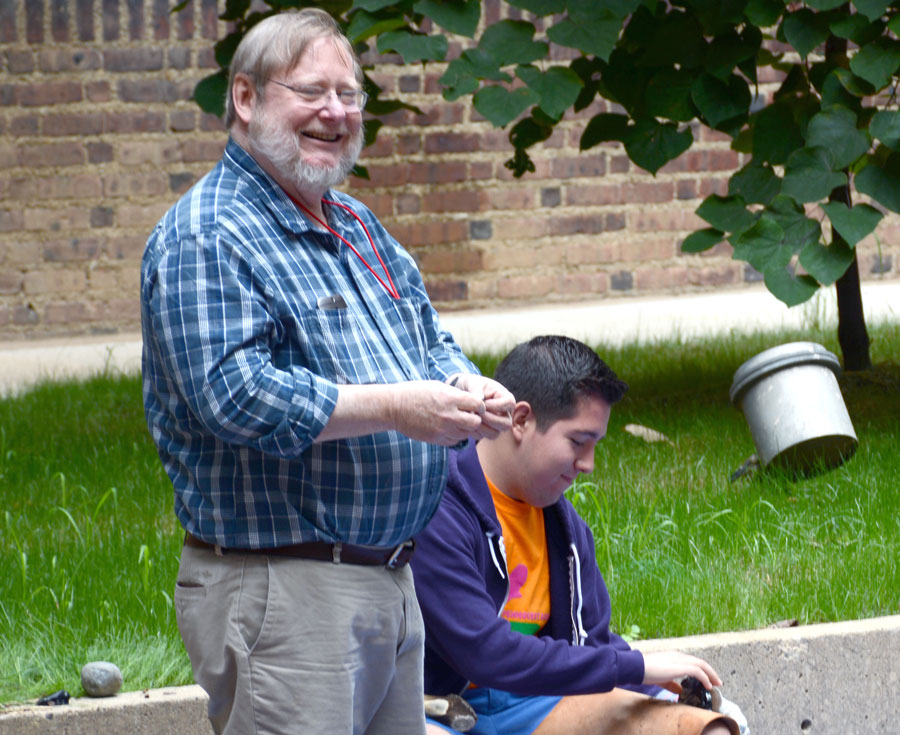Harold L. Dibble, preeminent paleoanthropologist, passed away on June 10, 2018, age 66. He was first and foremost a scientist in his approach to archaeology and a mentor to countless students and colleagues. Harold was the Francis E. Johnston Term Professor in Anthropology and Director of the Laboratory of Ancient Technology at the University of Pennsylvania, as well as Curator-in-Charge of the Penn Museum’s European Archaeology Section. He received his B.A.
(1974), M.A. (1976), and Ph.D. (1981) in Anthropology from the University of Arizona. He came to Penn as a lecturer (1982), and became an assistant professor (1985), associate professor (1991), and full professor (1996).
Best known for his research on Neandertals, Harold supported his work with 60+ grants, most from the National Science Foundation, Leakey Foundation, and University Research Foundation at Penn. He was featured in news media for his expertise, and was inter-viewed for Café Neandertal (Beebe Bahrami, 2017) and for TV (NGS 2011 “World’s Oldest Child;” NOVA 2002 “Neanderthals on Trial,” among others). He was an early pioneer in using a total station to record archaeological excavation, and wrote his own software to link the equipment to the computer (EDMwin) and create GIS layering (Newplot). His free software is used by numerous archaeologists today, in Paleolithic and later periods.

Harold spent every summer from 1984 through 2017 working at Neandertal sites in France (Pech de l’Azé IV, La Ferrassie, Roc de Marsal, Fontéchevade, and Combe Capelle, among others). But his interests were wider, and he also directed projects in Egypt (Abydos Survey for Paleolithic Sites) and in Morocco (Contrebandiers, which yielded the world’s oldest modern human child). His many influential contributions include “scraper reduction,” the idea that a piece of stone was repeatedly resharpened. He used to say that a prehistoric person ended up not with one tool, but with 50 or more tools from the same piece of stone. His laboratory projects used a robot, affectionately called “Super Igor,” to design and carry out controlled experiments in knapping stone artifacts. No matter the project, all of Harold’s work was based on scientific method, so that others can continue to test his ideas going forward. Harold also extensively published his research (11 books and 182 journal articles/book chapters) and used his experiences and computer/digital savvy to write 5 co-authored textbooks.
I was privileged to have known Harold for 42 years, having met him in graduate school at the University of Arizona, where we both studied with Arthur Jelinek. Beyond working with Harold on some projects over the years, it is Harold’s interactions with students and colleagues that I will miss most. He had a knack for engaging students in classes and the field and gave them numerous opportunities for hands-on experiences. Harold was an entertaining and informative teacher, an excellent mentor, a considerate listener and advice giver, a person who always saw the silver lining in any dark cloud, and an inexhaustible teller of corny jokes. We now sadly go “Forward into the Past” without him.
DEBORAH I. OLSZEWSKI, PH.D., is Adjunct Professor, Department of Anthropology, University of Pennsylvania, and Consulting Scholar, European Archaeology Section, Penn Museum.
